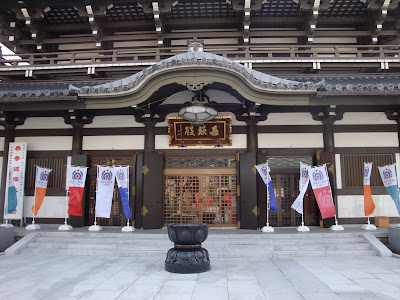
Meditation II
Here is another unexpected consonance. In the Silva method, visualization is used with meditation to develop distant viewing ability, finding lost objects and so on. This was intriguing, but I wasn't interested enough to pursue it further. Then, as I learned about Shingon (the form of vajrayana Buddhism that was brought to Japan), I heard that visualization is used in Shingon meditation practices. That two different meditative traditions, completely unrelated--and one non-religious--would both use visualization suggests that it must be a very useful tool. However, I must clarify that I have not been trained in any meditative visualization in Shingon, so I don't have any direct experience of this.
At this point, I was doing some Lotus Sutra chanting and Daimoku, and on alternate nights doing some 'experimental' meditation. I tried various ways of meditating. I found incense to be very useful, and for a while, I even meditated with new age music playing in the background, just like Lisa Simpson! Sometimes I meditated in a reclining chair, but usually I used a zabu-type cushion in the half-lotus position. I found that the 'eye trick' from the Silva method was a big help in any kind of meditation. This 'trick' made meditation very enjoyable, and I began to worry about getting too much bliss, because some commenters on E-Sangha suggested that too much bliss meant you were doing it wrong. However, I have continued to use it.
Here is another point about the eye trick. It is useful when I have trouble falling asleep. I would occasionally feel like my thoughts were spinning so fast that it was difficult to go to sleep. In my Nichirenist days, I tried chanting the Daimoku silently while trying to go to sleep. Sometimes it worked, but usually I would get distracted by monkey-mind thoughts and stop chanting. Now, using the eye-trick, the goings-on in my mind didn't matter so much. I could sort of lock into the eye-trick, and my success rate has been very good since I got used to doing it. I really haven't had any big sleepless nights for several years.
There was (is?) one point about the eye-trick that concerns me a bit. Zen teachers advise looking down while meditating. However, with some practice, I could get into the eye-trick mode even looking down.
Here is another footnote. The Silva book spends several pages on scientific research related to the method. Observers found fairly consistent ability of Silva meditators to go into the alpha-wave state when they started meditating. Sleep researchers also note that alpha waves are the gate of sleep. One thing this means for me: if I try to meditate lying down, I am very likely to go to sleep. So sitting on the cushion, the trick is to develop just the right balance of tension and relaxation, keeping just enough power in the lower back to keep from keeling over, otherwise pretty relaxed.
After meditating on my own for a while, I screwed up my courage and went to the public 'Ajikan' meditation sessions at the Koyasan Shingon Tokyo branch temple. The Shingon expert on E-Sangha told me that Ajikan is a very advanced technique, and the method taught to the public is very simplified. However, I found it very enjoyable, if only for the chance of enjoying the mood of the Tokyo temple. I feel that the setting can help support your meditation. So I like a darkened room with candlelight the best, and incense is also great. The classes are really a kind of guided meditation, with the teacher giving a pretty constant stream of instructions (in Japanese). Even so, I found the eye-trick method also worked well. (The photo shows the main hall of the Koyasan Tokyo Betsuin.)
No comments:
Post a Comment